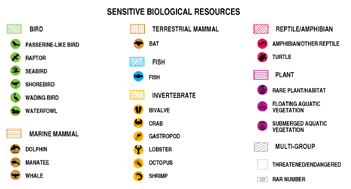Chloropleth Map of Radon Zones in Louisiana
Ø Red: Zone 1 counties have a
predicted average indoor radon screening level greater than 4 pCi/L
(picocuries per liter) (red zones) HIGHEST
POTENTIAL
Ø Orange: Zone 2 counties have a
predicted average indoor radon screening level between 2 and 4 pCi/L
(orange zones) MODERATE POTENTIAL
Ø Yellow: Zone 3 counties have a
predicted average indoor radon screening level less than 2 pCi/L (yellow
zones) LOW POTENTITAL
|
The purpose of this map is to assist National, State, and
local organizations to target their resources and to implement radon-resistant
building codes. Homes with elevated levels of radon have been found in all
three zones. All homes should be tested regardless of geographic location.
Dot density map: HIV in Thailand
Ø Dot density map of young men who tested positive for HIV
at time of entry into the Royal Thai Army, Thailand, November 1991–May 2000.
Each dot represents one man. Location of dots based on recruit’s residence
during the previous 2 years. Data on recruits entering in November 1993 and May
1994 are not available.
A dot density map is a type of
map that uses a dot symbol that may serve to geographically present a problem
area and provide information regarding clusters of areas of high prevalence
rates of a particular feature or phenomenon.
Proportional Symbol Map: France
ØMean
annual water stress duration, calculated for 12 weather stations in France
(data Météo-France), as the number of days of water deficit averaged over the
1983–1993 period. Size of the symbols is proportional to drought duration,
represented by 15 days categories, the smallest symbol representing 1 month and
the largest one over 2.5 months.
Proportional-symbol maps are used
to illustrate geographic data. The symbols are scaled proportionally to their
value and placed next to their corresponding geography.
Topographic Map of California’s Earthquakes
ØThis map shows the relative
intensity of ground shaking and damage in California from anticipated future
earthquakes. Although the greatest hazard is in the areas of highest intensity
as shown on the map, no region within the state is immune from potential for
earthquake damage. Expected damages in
California in the next 10 years exceed $30 billion.
Environmental Sensitivity Index (ESI) Map: Vieques Island,
Puerto Rico
ESI products serve as quick
references for oil and chemical spill responders and coastal zone
managers. The ARD watershed projects use
this information as a baseline reference for potential physical and biological
resources in and around the aquatic environment. This information can be used to evaluate
restoration opportunities for habitat and for terrestrial and aquatic species.
ESI
maps include three kinds of information:
Biological Resources: Oil-sensitive animals, as well as habitats
that either (a) are used by oil-sensitive animals, or (b) are themselves
sensitive to spilled oil (e.g., coral reefs).
Shoreline Rankings: Shorelines are ranked according to their sensitivity, the
natural persistence of oil, and the expected ease of cleanup.
Human-Use Resources: Resources and places important to humans
and sensitive to oiling, such as public beaches and parks, marine sanctuaries,
water intakes, and archaeological sites.







